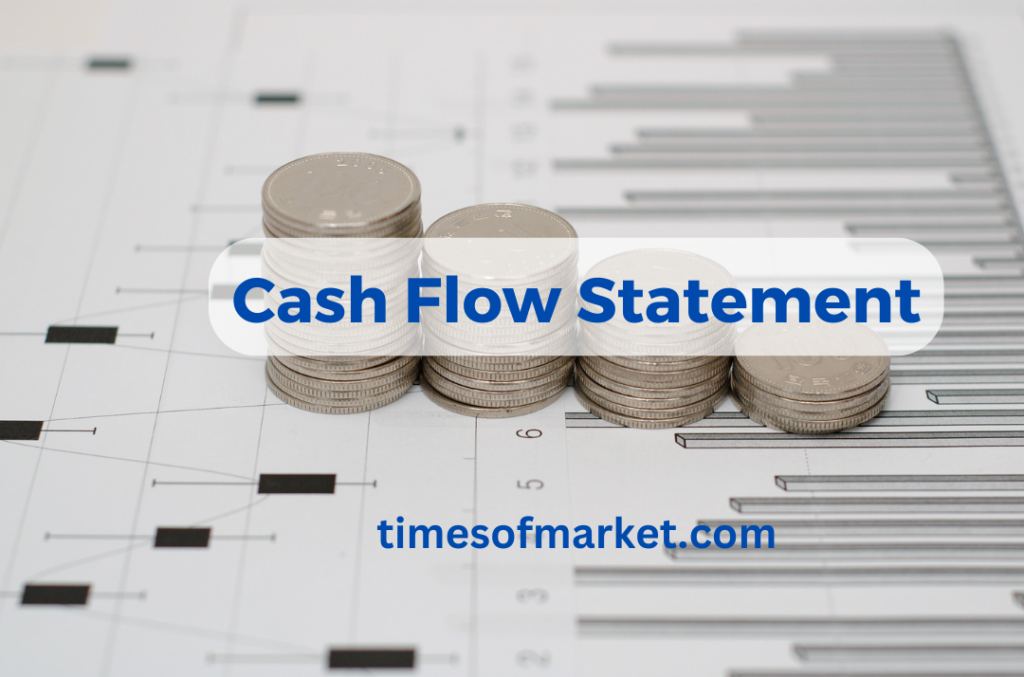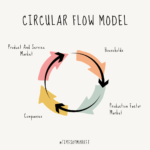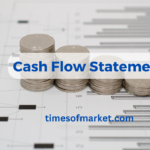Are you struggling to understand where your money is going and how to manage it better? A cash flow statement might be the solution you’ve been looking for. This essential financial tool helps you track the inflow and outflow of cash, giving you a clear picture of your financial health.
In this article, we’ll explore the importance of a cash flow statement and how it can help you make informed decisions, especially when facing financial challenges. With 82% of small businesses failing due to poor cash flow management, mastering this document is more crucial than ever.
What is a Cash Flow Statement?
A cash flow statement is a report that shows the money coming in and going out of a business, giving a clear picture of how the company is doing financially and how well it manages its day-to-day activities.
This statement helps to see how good a company is at handling its cash whether it can bring in enough money to pay off its debts and cover its expenses. As one of the three key financial reports, the cash flow statement works alongside the balance sheet and income statement. In this article, we’ll walk you through the structure of the cash flow statement and how you can use it to better understand a company’s financial health.
How to Use the Cash Flow Statement
The cash flow statement gives a clear view of how a company is doing financially. It shows where the company’s money is coming from and how it’s being used. This report, also called the statement of cash flows, is important for lenders because it reveals how much cash the company has on hand to cover its daily expenses and pay off its debts.
Investors also rely on this statement to see if the company is in good financial health. By looking at the cash flow statement, they can make smarter decisions about where to put their money.
The Cash Flow Statement’s Restrictions
- Excludes Non-Cash Items: The cash flow statement doesn’t include things like depreciation or changes in asset values, which means it might not give a complete view of the company’s finances.
- Historical Basis: It only shows past cash flows and might not accurately reflect the current or future financial situation due to timing differences.
- Excludes Future Cash Flows: It focuses on past and present cash flows, without considering future cash flow expectations or potential changes.
- Limited Net Income or Profitability Assessment: It doesn’t directly show or measure net income or profitability, so a company could have positive cash flow but low profitability, or vice versa.
Core Elements of a Statement of Cash Flow
- Operating Activities: This part looks at the cash that comes in and goes out from the day-to-day running of the business. It shows the money made from sales and the money spent on things like salaries, supplies, and rent.
- Investing Activities: This part shows the cash flow related to buying or selling assets, like equipment or property. It includes money earned from selling these assets or investments, and money spent on purchasing new ones or investing in other businesses.
- Financing Activities: This part focuses on cash flow related to funding the business. It includes money brought in from loans or issuing shares, and money spent on paying back loans, giving out dividends, or buying back shares.
The Cash Flow Statement’s The structure
The cash flow statement shows how cash moves in and out of a company. It breaks down into three main parts:
Cash Flow from Operating Activities
This part shows how much cash the company earns and spends from its main business activities. It includes:
- Money received from selling products or services
- Interest payments
- Taxes paid
- Payments to suppliers for goods and services
- Salaries and wages
- Rent
- Other business expenses
For businesses that trade investments, this also includes money from selling loans or stocks because it’s part of their regular business.
Changes in cash related to things like accounts receivable, depreciation, inventory, and accounts payable are included here.
Cash Flow from Investing Activities
This section covers cash used for buying or selling long-term assets like equipment or buildings. It also includes money from loans given out or received, and payments related to buying or merging with other companies.
Usually, this part shows cash going out when buying new equipment or assets. But if the company sells an asset, the cash received is shown here as cash coming in.
Cash Flow from Financing Activities
This part shows how cash comes from investors or banks and how it’s used to pay shareholders. It includes:
- Cash received from issuing stocks or bonds
- Payments made for stock buybacks
- Repaying loan principal
- Dividends paid to shareholders
Cash flow from financing activities shows cash coming in when raising funds and cash going out for dividends. For example, when a company issues bonds, it gets cash. But paying interest on those bonds means cash goes out. Interest is a cash expense but is shown in operating activities, not financing.
Importance of Cash Flow Statement
Cash flow is a key measure of how well someone or a business is handling money. It shows whether you can pay bills, invest in new opportunities, and keep things running smoothly day-to-day.
By keeping track of cash flow, you can spot patterns, predict when you might run low or have extra money, and make smarter financial choices. When cash flow is positive, it means you can reinvest in your business, grow, and stay stable. On the other hand, if cash flow is negative or not enough, you might need to adjust your spending, financing, or how you run things.
Managing cash flow well is essential for staying solvent, making timely payments, and planning for the future. Keeping an eye on and maintaining good cash flow helps you deal with economic ups and downs and work towards long-term financial success.
Difference between Cash Flow Statement and Fund Flow Statement
| Aspect | Cash Flow Statement | Fund Flow Statement |
| Purpose | To provide a detailed analysis of cash inflows and outflows over a period. | To show the changes in financial position between two balance sheet dates. |
| Focus | Cash transactions and liquidity. | Sources and uses of funds. |
| Components | – Operating Activities<br>- Investing Activities<br>- Financing Activities | – Sources of Funds<br>- Uses of Funds |
| Time Period | Typically prepared for a specific period (monthly, quarterly, annually). | Usually prepared for a specific period between two balance sheet dates. |
| Main Statement | Shows actual cash received and spent. | Shows how funds are acquired and utilized. |
| Basis of Calculation | Based on cash transactions (actual cash flows). | Based on changes in working capital and other financial elements. |
| Example Items | – Cash received from customers<br>- Cash paid to suppliers | – Issue of shares<br>- Repayment of long-term loans |
| Impact on Financial Statements | Directly affects the cash and cash equivalents on the balance sheet. | Affects the changes in financial position and working capital. |
| Relevance | Important for assessing liquidity, cash management, and short-term viability. | Useful for understanding changes in financial structure and working capital. |
Example of Cash Flow Statement
A cash flow statement is a document that tracks the movement of cash in and out of a business over time. It’s split into three main parts: money coming from daily business activities, money used for buying or selling things, and money related to borrowing or paying back loans. Here’s a basic example of what a cash flow statement looks like:
Cash Flow Statement for XYZ Company
For the Year Ended December 31, 2023
Operating Activities
- Net Income: $50,000
- Adjustments for Non-Cash Items:
- Depreciation: $10,000
- Amortization: $5,000
- Changes in Working Capital:
- Increase in Accounts Receivable: -$7,000
- Increase in Inventory: -$6,000
- Increase in Accounts Payable: $4,000
Net Cash Provided by Operating Activities: $56,000
Investing Activities
- Purchase of Equipment: -$15,000
- Sale of Investment: $2,000
Net Cash Used in Investing Activities: -$13,000
Financing Activities
- Proceeds from Issuance of Common Stock: $10,000
- Repayment of Long-Term Debt: -$8,000
- Dividends Paid: -$5,000
Net Cash Provided by Financing Activities: -$3,000
Net Increase in Cash: $40,000
Beginning Cash Balance: $10,000
Ending Cash Balance: $50,000






